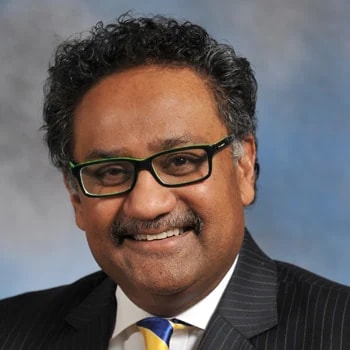The Strategist CFO has been saved

Perspectives
The Strategist CFO
Four orientations for engaging in the strategy process
CEOs and boards increasingly want CFOs to not only deliver a finance organization that gets the numbers right, but also partner with them in shaping the company’s strategy. But when asked what they want from a strategic CFO, their answers vary widely.
Explore content
- Read and download the article
- The strategist CFO video
- About Deloitte's CFO Program
- Meet the authors
- Follow @deloittecfo
Based on practice observations, discussions with numerous CFOs, and knowledge gained from more than 500 Deloitte CFO Transition Lab™ sessions, we have framed the four orientations of a strategist CFO model to help guide better alignment between CFOs’ actions and CEO and board expectations. Beyond the well-established four faces of the CFO as operator, steward, catalyst, and strategist, 1 the orientations bring greater clarity to the strategist role and the capacity of an organization to reorient and execute a new strategy. In this issue of CFO Insights, we’ll outline the orientations and examine how each is a choice regarding the scope of a CFO’s role and means of involvement in the strategy process.
The strategy process: core questions
Making the necessary choice starts with a version of the cascade of strategic choices first laid out by A.G. Lafley and Roger L. Martin in their book Playing to Win: How Strategy Really Works. 2 Key corporate strategy questions include:
- What are the aspirations and goals of the company?
- Where will you play? (What products and/or services will your company choose to offer, and in what markets will you offer these products and services?)
- How will you play to win? (How will your company differentiate itself to gain advantage over competitors?)?
- What distinctive capabilities are required to sustain competitive advantage?
- What management systems and processes are required to succeed?
CFOs can then bring a financial discipline to support and extend the above strategy process by addressing questions such as:
- Are the financial goals of the company viable?
- What products and markets deliver the greatest promise for revenue or margin growth?
- How should the company organize and structure financing of key investments to generate competitive advantage?
- What structures (for example, business models; legal and tax entities; onshore, offshore, or outsourcing talent models) and processes (automation, build vs. buy, networking, and so on) enable competitive advantage and deliver superior market valuation and returns?
- What financial and management reporting enables management to effectively execute and deliver the strategy?
The strategy process frames answer to the above questions and executes on them to deliver returns to shareholders. The challenge for CFOs is to choose effective ways to engage in the process in the context of their company’s business, leadership, and directors. The four key orientations below outline how CFOs can choose to engage the strategy process.

Four orientations
There are four distinct ways CFOs can choose to orient themselves—responder, challenger, architect, or transformer:
- Responder. As a responder, the CFO and the finance organization support the company’s strategy development by helping key business leaders quantitatively analyze the financial implications of different strategy choices. This type of CFO orientation is especially evident in highly decentralized businesses where the CEO chooses to drive accountability for strategy and performance to business-unit leaders. Occasionally, this orientation is also prevalent when the CEO chooses to limit the role of the CFO or finance in the strategy process to quantitative and analytic support. To be an effective responder, the CFO and finance organization should consider having a central financial planning and analysis (FP&A) capability that delivers the relevant analyses and data to the businesses, whose leaders have primary responsibility for generating strategy alternatives.
- Challenger. As a challenger, the CFO and finance organization act as stewards of future value in the strategy process by critically examining the risks to, and expected returns on, different strategy alternatives. Being a challenger is sometimes equated with being a “Dr. No,” as the CFO and finance organization seek to minimize risk or ensure adequate returns to future capital allocations and investments (see Lessons from the Lab: It Takes More than “Dr. No” to Create Value). Being an effective challenger may require the CFO and finance organization to have FP&A capabilities similar to those required of a responder, as well as access to requisite information from the business units on key strategy assumptions and models. Importantly, the CFO requires the permission of the CEO to challenge business-unit leaders and their strategies. When given that permission, the CFO as challenger is especially critical to the review of major strategy investment decisions.
- Architect. In the architect orientation, the CFO, finance department, and business leaders jointly work through shaping strategy choices and apply finance strategies to complement and maximize the value of particular strategies. Architects go beyond the challenger orientation to enable the financing of innovative initiatives through varied finance strategies and finance arrangements with suppliers, customers, or delivery channels. Architects thus work to find “a path to yes” on key business investments. To effectively deliver the architect orientation, the CFO, finance organization, and businesses might need to establish mutual trust and work together at the outset of setting the strategy. In addition, the CFO often needs a strong finance team inside the businesses to proactively partner with business leaders throughout the strategy process.
- Transformer. As a transformer, the CFO becomes a lead partner to the CEO in shaping and executing future strategy. The CFO is key to execution of “real operational and financial options” for shifting the product market mix, delivering value, and creating distinctive capabilities. For example, consider a multidivision company with common accounting and financial systems where the original synergies driving the existing product market mix no longer exist. By upgrading the systems, but doing so in a way that allows the efficient spinout of a division in the future, the CFO operationally creates the capacity for shifting a core strategy choice—the product market mix. Or by changing the mix of debt to equity, the CFO may free up cash to invest in future growth, creating financial options for the future. Through carefully structured financing and lease models, the company could change how customers are able to buy or use its products, thus shifting the business model to more-profitable formats. In short, CFOs as transformers proactively engage in addressing the core questions in a strategy process, and they develop and execute options through finance in a way that allows the company to shift its strategy effectively.

Choosing to be an effective strategist
For CFOs, choosing to be an effective strategist demands earning a seat at the strategy table, having an effective finance team, and selecting the strategy orientation that is appropriate to the context of the company and level of permission granted by the CEO. This is obviously not simple, and effective CFO strategists continually need to reorient themselves to changing organization situations and contexts.
While increasingly recruited to be strategy partners to their CEOs, many CFOs in our CFO Transition Lab sessions note they have to earn a seat at the strategy table—especially those internally promoted from controller, accounting, and
One way to generate valuable strategy opportunities is to ask critical questions about the dominant growth constraints, uncertainties, and risks, and scale assumptions confronting the company (see The CFO as Pragmatic Strategist: Lessons from the Lab). A strong finance team is also key to earning a seat at the table, for three reasons. First, by getting the basics right, the team presents the finance organization as credible. Second, a strong finance team frees up the CFO to attend to strategic matters (see Crossing the Chasm from Operator to Strategist). Third, it can provide the quantitative analysis and support capabilities vital to shaping strategy.
The choice of strategist orientation depends extensively on the context of the company and the level of permission from the CEO. The table in Figure 1 summarizes common requirements for CEO permission and finance and organization capabilities, as well as typical contexts for the different types of orientations.


No single approach
There is no one single approach to being an effective strategist CFO. The four CFO orientations described herein should help CFOs, CEOs, boards, and business-unit leaders better establish mutual expectations on how the CFO will engage in the strategy process and address key strategy questions within the company. Moreover, these orientations are not static, and the appropriate orientation will vary with the changing context and performance of the organization.
Endnotes
1Deloitte LLP’s Four Faces Framework: http://www.deloitte.com/view/en_US/us/Services/additional-services/chief-financial-officer/four-faces-cfo/index.htm
2Playing to Win: How Strategy Really Works, A.J. Lafley and Richard Martin, Harvard Business Review Press, 2013.
About Deloitte’s CFO Program
The CFO Program brings together a multidisciplinary team of Deloitte leaders and subject matter specialists to help CFOs stay ahead in the face of growing challenges and demands. The Program harnesses our organization’s broad capabilities to deliver forward thinking and fresh insights for every stage of a CFO’s career–helping CFOs manage the complexities of their roles, tackle their company’s most
For more information about Deloitte’s CFO Program, visit our website




